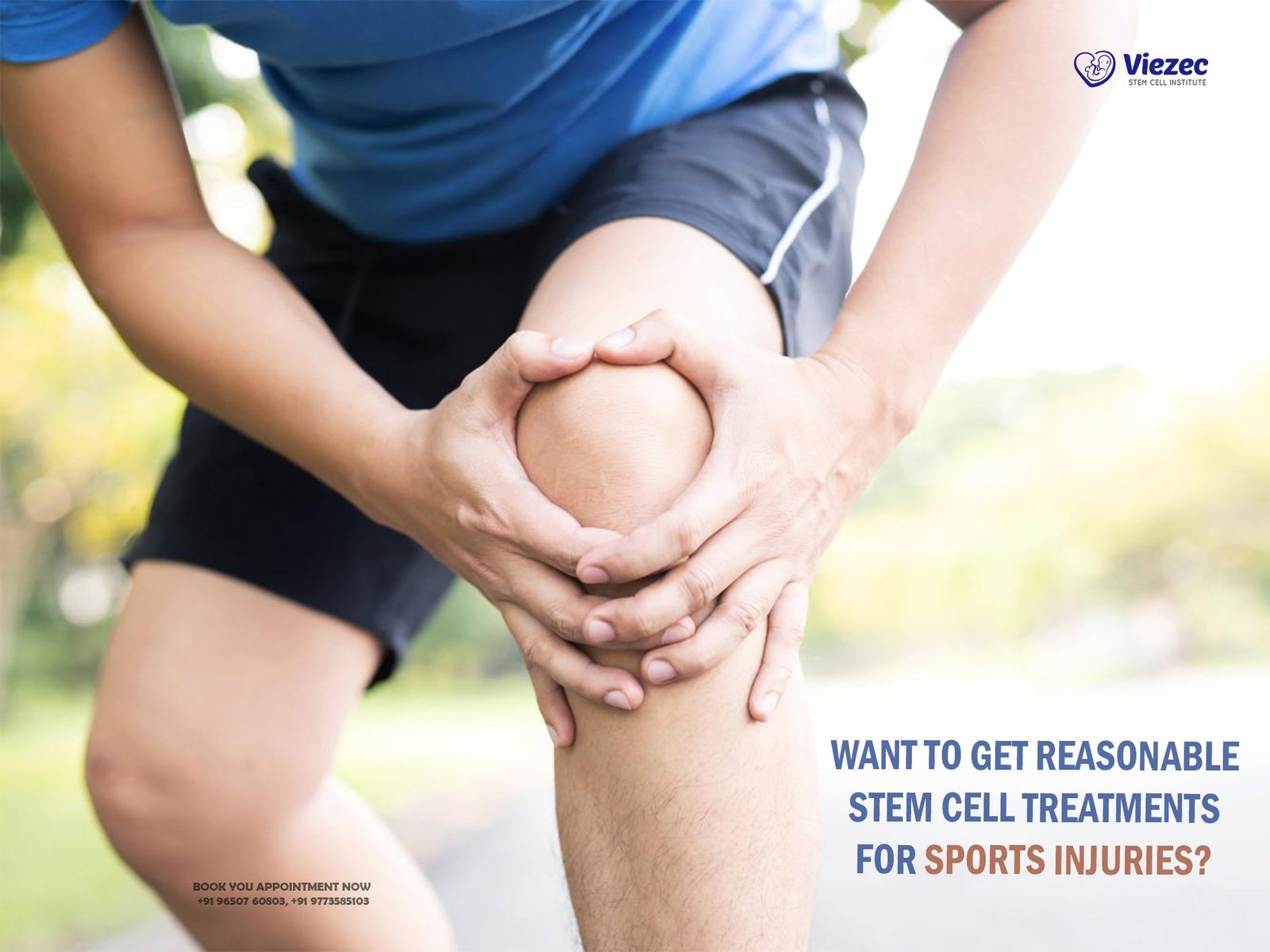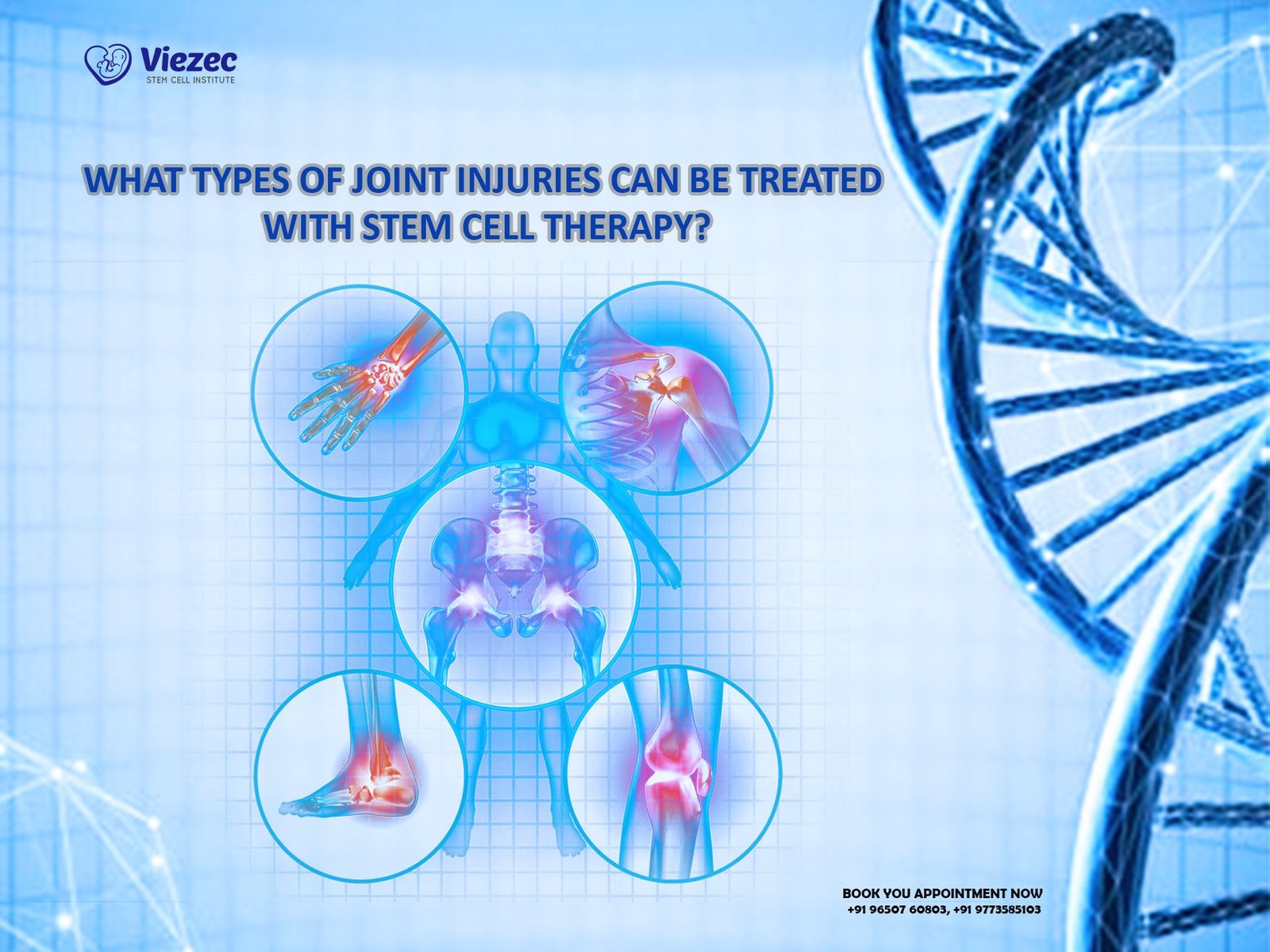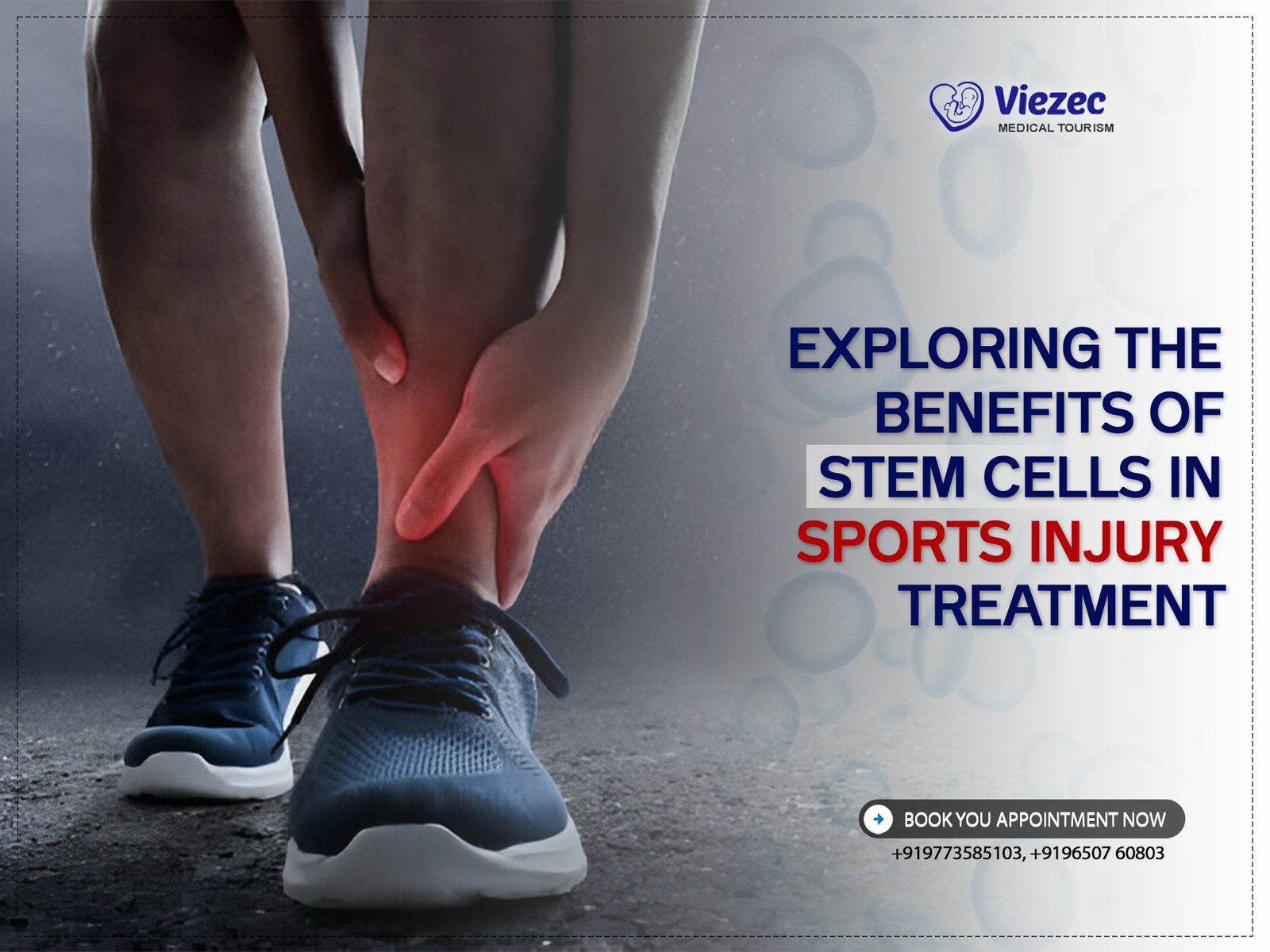Stem cell therapy is transforming the way athletes recover from injuries—offering a faster, less invasive, and more effective path to healing. This article explores how regenerative treatments using mesenchymal stem cells (MSCs) are helping athletes overcome common injuries such as ligament tears, tendon damage, cartilage loss, and muscle strains. It highlights the advantages of stem cell therapy over conventional methods, explains the procedure, and emphasizes why India is emerging as a top destination for affordable, high-quality treatment. With real recovery stories and expert guidance, readers will gain a clear understanding of how to access cutting-edge care without breaking the bank.
Why Athletes Are Turning to Stem Cell Therapy
A Modern Solution for Common Sports Injuries
In today’s competitive sports world, time off the field is time lost. That’s why athletes are increasingly turning to stem cell therapy as a fast, effective, and future-forward solution for injury recovery. Whether it’s a torn ligament, a damaged tendon, or worn-out cartilage, stem cells offer a natural way to heal the body—by actually regenerating the damaged tissue.
Unlike traditional treatments that merely manage pain or delay surgery, stem cell therapy addresses the root of the injury. It stimulates the body’s own repair mechanisms, reducing inflammation, accelerating recovery, and potentially helping athletes return to play faster and stronger than before.
Minimally Invasive and Drug-Free Healing
One of the biggest advantages of stem cell therapy is how minimally invasive it is. Forget long hospital stays or intense surgeries—most procedures are done on an outpatient basis with just local anesthesia. The treatment uses the patient’s own stem cells or ethically sourced cells to target injured areas, promoting healing from the inside out.
Best of all? It’s drug-free. Stem cell therapy minimizes the need for steroids, anti-inflammatories, or opioids, allowing the body to recover naturally without the side effects of medication or the risk of dependency. This makes it not only safer but more sustainable for long-term health and athletic performance.
Understanding Stem Cell Treatment
What Are Stem Cells?
Stem cells are the building blocks of the human body. These unique cells have the ability to develop into many different types of specialized cells—like muscle, bone, cartilage, or nerve tissue. That’s what makes them so powerful in regenerative medicine.
When applied to sports injuries, stem cells don’t just help mask pain—they actually contribute to repairing and rebuilding damaged tissues. Think of them as nature’s repair kit, capable of restoring structure and function in injured areas where traditional medicine might fall short.
Regenerative Potential in Sports Medicine
In the realm of sports medicine, stem cells offer more than just hope—they offer results. These cells can transform into the very tissues that athletes need to heal: muscle fibers, tendon fibers, and cartilage cells. When injected into the site of injury, they help reduce inflammation, accelerate tissue repair, and potentially prevent long-term joint or muscle damage.
It’s not just about getting back on the field faster—it’s about healing better, and with less risk of reinjury.
Types of Stem Cells Used
Stem cell therapy isn’t one-size-fits-all. Several types of stem cells can be used depending on the injury and the patient’s condition. Among them, one type stands out for sports-related healing.
Mesenchymal Stem Cells (MSCs)
Mesenchymal Stem Cells are the gold standard in orthopedic and sports injury treatments. Found in bone marrow, fat tissue, and umbilical cords, MSCs are prized for their ability to reduce inflammation and stimulate the body’s healing response.
Their anti-inflammatory and immunomodulatory properties are especially valuable for athletes, helping to soothe swollen tissues and jumpstart regeneration.
Adipose and Bone Marrow Sources
Two of the most common ways to harvest MSCs are from adipose tissue (fat) and bone marrow. Adipose-derived stem cells are collected via a minimally invasive liposuction procedure and are known for being abundant and potent. Bone marrow-derived stem cells are typically extracted from the pelvic bone and are rich in growth factors that enhance healing.
Both sources are safe, effective, and widely used in sports injury clinics around the world.
Ready to Recover Faster?
Explore stem cell therapy for sports injuries and book your consultation today.
Affordable Doesn’t Mean Low Quality
Cost Comparison: India vs. US/UK
One of the biggest myths about advanced medical treatments is that they must be expensive to be effective. But when it comes to stem cell therapy, especially for sports injuries, that’s simply not true—especially in countries like India.
In the United States or the United Kingdom, stem cell treatments can cost anywhere from $15,000 to $25,000 or more, depending on the complexity and provider. In contrast, India offers the same high-quality treatment for a fraction of the cost, typically ranging between $3,000 and $6,000. That’s a savings of up to 80%, without sacrificing the safety, technology, or success rates associated with leading global standards.
India’s affordability isn’t about cutting corners—it’s about offering value in a competitive, well-regulated medical environment.
Why Medical Tourists Choose India
India is now one of the leading destinations for medical tourism, and stem cell therapy is a major reason why. Thousands of athletes and patients from around the world travel to India each year to access advanced regenerative care without breaking the bank.
Internationally Accredited Facilities
Top stem cell clinics and hospitals in India are internationally accredited by bodies such as NABH and JCI. These facilities feature cutting-edge labs, imaging systems, and sterile environments that match or exceed what’s available in the West. Many of the doctors and researchers are trained in the US, UK, or Europe and bring global experience to local practice.
English-Speaking Support and Care Teams
Language barriers? Not a problem. Most Indian hospitals have dedicated international patient departments with fluent English-speaking staff, personal case managers, and 24/7 support. From airport pickup to post-treatment follow-up, every step is designed for ease, comfort, and clarity.
Sports Injuries That Stem Cells Can Heal
Stem cell therapy is not limited to just one type of injury—it addresses a wide range of issues that athletes commonly face. Whether it’s acute trauma or chronic wear and tear, stem cells offer a natural path to healing and long-term recovery.
Ligament Tears and Tendon Injuries
Ligaments and tendons are the connective tissues that stabilize joints and enable movement. When torn or overstretched, they can be slow to heal and painful to manage. Stem cell therapy helps by stimulating collagen production and accelerating the body’s own tissue-repair process.
ACL, MCL, Rotator Cuff Injuries
These are some of the most notorious injuries in sports—especially in football, basketball, baseball, and skiing. Partial tears in the ACL (anterior cruciate ligament), MCL (medial collateral ligament), or rotator cuff can often be treated with stem cells, helping athletes avoid surgery and regain stability and strength much faster.
Cartilage Damage and Joint Pain
Cartilage doesn’t heal easily on its own—and once damaged, it can lead to long-term joint pain or even osteoarthritis. Stem cells offer a non-surgical solution by encouraging new cartilage growth and reducing joint inflammation.
Knee, Hip, and Shoulder Regeneration
Joints like the knee, hip, and shoulder are constantly under stress in athletic activity. With stem cell injections, many athletes report reduced stiffness, improved mobility, and less pain—allowing them to return to training sooner and more confidently.
Chronic Muscle Strains and Overuse Injuries
For athletes dealing with repetitive strain or chronic muscle fatigue, stem cells can provide much-needed relief. These injections help rejuvenate damaged muscle fibers, reduce scar tissue, and improve muscular function—without downtime or heavy medications.
From weekend warriors to elite athletes, stem cell therapy is helping people at every level bounce back from injuries that once required surgery or months of rest.
Have Questions About Your Injury?
Our team is here to guide you through stem cell treatment options tailored to your needs.
How the Treatment Works
Understanding the stem cell treatment process can help ease uncertainty and prepare you for what to expect. The procedure is typically quick, outpatient-based, and tailored to each patient’s specific injury and goals.
Step-by-Step Breakdown of the Procedure
Stem cell therapy for sports injuries generally follows three key steps:
Cell Harvesting, Processing, and Injection
-
Harvesting: Stem cells are collected from a donor source—most often from the patient’s own fat tissue (adipose-derived) or bone marrow. This is done using minimally invasive techniques like liposuction or bone marrow aspiration under local anesthesia.
-
Processing: The harvested cells are processed in a sterile laboratory environment using advanced centrifuge and filtration techniques. This step concentrates the most potent regenerative cells and prepares them for reintroduction into the body.
-
Injection: The concentrated stem cells are precisely injected into the injury site using imaging guidance (like ultrasound or fluoroscopy) to ensure accurate placement. This enhances the chances of effective healing at the targeted location.
Expected Timeline for Recovery
Healing doesn’t happen overnight—but stem cell therapy can significantly shorten downtime compared to surgery or traditional rehab alone.
From Injection to Full Mobility
-
Week 1–2: Mild inflammation or soreness is common. Most patients can return to light activities within a few days.
-
Week 3–6: Noticeable improvement in pain and flexibility as tissues begin to regenerate.
-
Month 2–3: Significant gains in strength, range of motion, and function. Many athletes resume training by this stage.
-
3+ Months: Full recovery is often achieved, especially when combined with physical therapy and proper conditioning.
Results can vary based on the injury type, severity, and the individual’s overall health, but many athletes report long-term benefits and a lower risk of reinjury.
Is Stem Cell Therapy Painful?
Pain is minimal, especially compared to surgery. Most patients describe the procedure as similar to getting a shot or a routine biopsy.
What Patients Report About the Experience
-
During Harvesting: Mild discomfort, especially during bone marrow extraction—but it’s typically well-tolerated with local anesthesia.
-
After Injection: Temporary swelling or soreness at the injection site for a day or two, manageable with ice and over-the-counter pain relief.
-
Overall: Most people return to normal activity quickly and report feeling better within weeks.
Affordable Regenerative Care Awaits
Discover cost-effective stem cell therapy for sports injuries without compromising quality.
Choosing the Right Clinic or Provider
When it comes to regenerative medicine, where you get treated is just as important as the treatment itself. Choosing the right clinic ensures not only safety but also the highest chance of a successful recovery.
Key Factors to Evaluate
Not all stem cell clinics are created equal. Here are some essential factors to consider before making your decision:
Experience, Credentials, and Technology
-
Medical Expertise: Look for clinics with board-certified doctors, preferably those who specialize in orthopedics, sports medicine, or regenerative therapy.
-
Proven Track Record: Ask about the clinic’s history with stem cell treatments—how many procedures have they performed? What’s their success rate?
-
Advanced Technology: A reputable clinic should have access to high-end imaging tools (like ultrasound or fluoroscopy) and in-house stem cell processing labs for better control and accuracy.
Clinics that offer a personalized treatment plan—based on your specific injury and physical goals—are often a better choice than one-size-fits-all providers.
Questions to Ask Before Starting Treatment
Before committing to a stem cell therapy program, it’s important to gather clear, transparent information. Here are four essential questions to ask your provider:
-
Is the clinic accredited and regulated?
Look for government certifications, hospital affiliations, or international accreditations (like JCI or NABH). -
What type of stem cells will be used?
Understand whether your treatment will involve autologous (your own cells) or donor cells, and which source—adipose, bone marrow, or umbilical. -
What are the success rates for my specific injury?
Ask for statistics or testimonials from previous patients with similar conditions. -
What post-treatment care will I need?
A proper rehabilitation plan is crucial. Ensure your provider supports ongoing recovery with physical therapy or follow-ups.
Choosing a qualified, transparent, and experienced clinic can make the difference between temporary relief and lasting recovery.
Real Stories, Real Recoveries
One of the most inspiring aspects of stem cell therapy is hearing how it has changed real lives. From weekend warriors to professional athletes, countless individuals have regained mobility, strength, and confidence after undergoing regenerative treatment.
Case Studies from Treated Athletes
-
Footballers with ACL Tears: Several athletes who suffered partial ACL tears opted for stem cell injections rather than surgery. Within months, they returned to competitive play—with better knee stability and reduced reinjury risk.
-
Marathon Runners with Chronic Tendonitis: Long-distance runners struggling with persistent Achilles tendon pain experienced significant relief and improved performance after receiving MSC-based therapy, allowing them to train pain-free once again.
-
Tennis Players with Rotator Cuff Injuries: Instead of undergoing months of rehab post-surgery, some players used stem cell therapy to recover faster and more naturally—preserving shoulder mobility and avoiding surgical downtime.
These success stories are more than testimonials—they’re proof that regenerative medicine is no longer futuristic; it’s a practical, effective solution being used right now.
Long-Term Results and Performance Gains
Stem cell therapy does more than just patch up injuries—it helps rebuild and strengthen tissues at the cellular level. That means:
-
Improved joint stability
-
Stronger connective tissues
-
Less scar tissue formation
-
Reduced chances of reinjury
Many athletes report not only returning to their pre-injury condition but exceeding it—running faster, lifting heavier, or moving more confidently than before.
The result? A more resilient, long-lasting athletic future.
Final Thoughts
Safe, Affordable, and Effective Healing Is Possible
Stem cell therapy is no longer a treatment reserved for elite athletes or the ultra-wealthy. Today, it’s an accessible, science-backed solution for anyone looking to heal from sports injuries without surgery, long recovery periods, or risky medications.
With advances in regenerative medicine, top-tier treatment is now available at affordable prices—especially in countries like India, where high-quality care meets global standards. When guided by skilled professionals, stem cell therapy offers a safe and effective path to long-term recovery and performance enhancement.
It’s not just about healing faster—it’s about healing smarter.
Take the First Step Toward a Stronger Comeback
If you’re sidelined by pain, stiffness, or a lingering injury, stem cell therapy could be the turning point in your recovery journey.
Now is the time to explore this transformative option. Consult a trusted provider, ask the right questions, and take control of your comeback. Whether you’re aiming to return to the field, hit a personal best, or simply move pain-free—regenerative healing may be your key to a stronger future.







